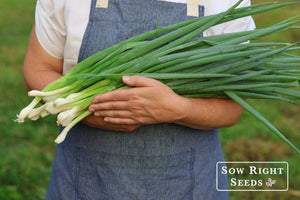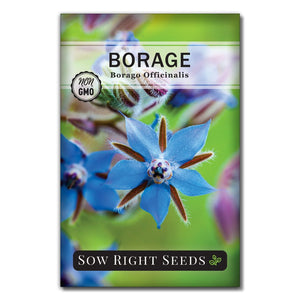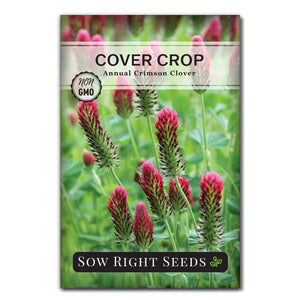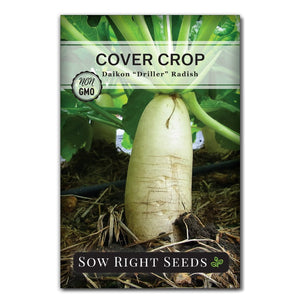What is Leaf Mold? 8 Reasons You Need to Make This Garden Gold!
Improving soilSome of the most effective and satisfying gardening techniques are those that rely on putting the forces of nature to work for you instead of fighting against the inevitable. Leaf mold is a simple but effective resource for improving your soil’s condition and promoting a healthier environment that allows your plants to thrive. As a bonus, leaf mold is also exceptionally inexpensive and easy to make.
What Is Leaf Mold?
Basically, leaf mold is decomposed leaves. It doesn’t involve anything harmful or toxic, although it does make use of beneficial fungi. When leaves fall from trees in autumn and pile up on the ground, they undergo a natural composting process. They gradually break down through the action of fungi, bacteria, insects, and other small organisms. The end result of this process is a dark, crumbly, and rich organic matter that smells like a forest floor. This is what we call leaf mold.
The Differences in Leaf Mold and Compost
You may hear leaf mold explained as composted leaves. Although this is technically true, compost and leaf mold are distinct soil amendments with different uses.
Traditional composting generally involves breaking down organic materials by bacteria and other microorganisms. This process generates heat. In contrast, creating leaf mold is a slower process that is primarily driven by fungi and does not generate much heat. Because the process is slower, leaves retain some of their structure. This helps enhance soil texture and aids in moisture retention.
Another difference between leaf mold and compost is the nutrient density. Compost is usually created from a mix of green and brown organic materials that include both nitrogen and carbon-rich materials. The decomposition process creates a rich, nutrient-dense soil amendment with a more diverse set of nutrients from a wider range of sources than leaf mold, which is composed of one type of material.
The 8 Benefits of Leaf Mold
What makes leaf mold so special? Here are some essential benefits leaf mold provides to the garden at the ultra-low cost of free.
Soil conditioner: Leaf mold improves the structure of the soil, making it more porous and easier for plant roots to penetrate.
Moisture retention: Leaf mold is excellent at retaining water, which helps to keep your plants hydrated. It can retain up to 500% of its own weight in water.
Enhanced fertility: While it's not as nutrient-rich as compost, leaf mold does contain a good amount of beneficial minerals like calcium and magnesium that enrich the soil.
Disease suppression: Some studies suggest that using leaf mold in your garden can suppress certain plant diseases and pests.
Insulation: Leaf mold can provide an insulating barrier to protect plant roots from temperature extremes, both hot and cold.
Supports soil life: Leaf mold fosters a thriving ecosystem within the soil, creating an ideal environment for organisms such as earthworms and helpful bacteria that contribute significantly to soil health.
Sustainability: Making leaf mold is a great way to recycle fallen leaves that might otherwise be considered waste and hauled off to the landfill.
Weed suppression: When used as a mulch, leaf mold can help to suppress weed growth.

How to Make Leaf Mold
The process of making leaf mold is incredibly straightforward: you need to collect leaves into one spot, water them, and wait.
A dedicated compost bin, enclosure, or even garbage bags with a few holes for drainage and airflow can serve as your leaf mold production site. Gather up fallen leaves over time or all at once. You can shred the leaves to speed up the process, but this isn’t necessary if you don’t have access to the right equipment.
What Does Leaf Mold Look Like?
Be patient while waiting on your leaves to decompose. It will take six months to two years for the transformation to be complete. Leaf mold is a dark brown or black, crumbly substance that looks a lot like rich, fertile garden soil or the rich humus of a forest floor - light and airy with a fresh, earthy aroma. The scent is a pleasant one that will be familiar to most people who like to spend time in the woods and is a good indication that your leaf mold is finished decomposing and ready to use.

How to Use Leaf Mold
Once your leaf mold is ready, you can use it in many ways around the garden.
To use leaf mold as mulch, spread a 2-3 inch layer around the base of your plants. It will greatly increase water retention. This can protect against drought, reduce your need for watering, and add an extra layer of protection for raised beds and container gardens that are prone to moisture evaporation. Leaf mold also will suppress weeds and continue to decompose, further improving your soil structure.
Another way to use leaf mold is as a soil amendment. It can be tilled into the soil or worked in by hand with garden tools. Its spongey texture holds water and aerates the soil. It also increases the diversity in your soil’s ecosystem with beneficial fungi and by attracting helpful organisms like worms and insects that further improve the soil.
You can also use leaf mold as a base for your homemade potting mix instead of peat or coir. It’s inexpensive, responsibly sourced, and provides excellent moisture retention and aeration in your soilless mixes for your potted plants and seedlings.
Leaf mold is a simple, free, and extremely helpful resource for your garden. It harnesses the power of nature’s perfect recycling system to improve your soil’s texture and soil retention. It’s also free and easy to create. The next time you rake autumn leaves, why not make your own leaf mold? Your garden (and wallet) will thank you!
If you found this information helpful, share it with a gardening friend!










An excellent solution for your garden. I actually looked into this topic in a post https://gardeniaorganic.com/what-is-leaf-mold/ to see how it might work. Also, every season I have a lot of leaves, and it is very useful to use them for such benefit in my garden
Leave a comment